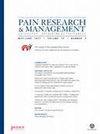A Critical Overview of Systematic Reviews and Meta-Analyses of Acupuncture for Female Stress Urinary Incontinence
IF 2.5
3区 医学
Q2 CLINICAL NEUROLOGY
引用次数: 4
Abstract
Objectives As a urinary dysfunction disorder, stress urinary incontinence (SUI) is more common in women than in men. Acupuncture, a traditional minimally invasive technique, has potential efficacy in the treatment of SUI. The purpose of this overview is to critically assess the available evidence on acupuncture for the treatment of SUI in women. Methods Two researchers searched seven databases for systematic reviews (SRs)/meta-analyses (MAs) of randomized controlled trials (RCTs) on acupuncture for SUI. Two researchers assessed the included SRs/MAs using the Assessment of Multiple Systematic Reviews 2 (AMSTAR-2), the Risk of Bias in Systematic (ROBIS) scale, the list of Preferred Reporting Items for Systematic Reviews and Meta-Analysis (PRISMA), and the Grading of Recommendations Assessment, Development, and Evaluation (GRADE) system. Results Eight published SRs/MAs were included in our overview. According to the results of the AMSTAR-2 assessment, all SRs/MAs were of very low quality. According to the ROBIS evaluation results, no SR/MA was assessed as low risk of bias. According to the results of the PRISMA checklist assessment, no SR/MA was fully reported on the checklist. According to GRADE, a total of 27 outcomes extracted from the included SRs/MAs were evaluated, and only 1 was rated as high quality. Conclusions Acupuncture may be an effective and safe complementary treatment for SUI in women. However, further standard and comprehensive SRs/MAs and RCTs are needed to provide an evidence-based medical rationale for this.针刺治疗女性压力性尿失禁的系统综述和荟萃分析
目的:应激性尿失禁(stress urinary incontinence, SUI)是一种泌尿功能障碍,女性比男性更常见。针刺作为一种传统的微创技术,在SUI的治疗中具有潜在的疗效。本综述的目的是批判性地评估针刺治疗女性SUI的现有证据。方法2名研究人员检索了7个数据库,对针刺治疗SUI的随机对照试验(RCTs)进行系统评价(SRs)/meta分析(MAs)。两位研究者使用多重系统评价评估2 (AMSTAR-2)、系统偏倚风险(ROBIS)量表、系统评价和荟萃分析首选报告项目列表(PRISMA)和推荐评估、发展和评价分级(GRADE)系统对纳入的SRs/MAs进行评估。结果8篇已发表的SRs/MAs纳入我们的综述。根据AMSTAR-2评估的结果,所有的SRs/ ma质量都很低。根据ROBIS评价结果,没有SR/MA被评价为低偏倚风险。根据PRISMA检查表评估的结果,检查表上没有完整报告SR/MA。根据GRADE,从纳入的SRs/MAs中提取的27个结局被评估,只有1个被评为高质量。结论针刺治疗女性SUI是一种安全有效的辅助治疗方法。然而,需要进一步的标准和全面的SRs/MAs和随机对照试验来提供基于证据的医学依据。
本文章由计算机程序翻译,如有差异,请以英文原文为准。
求助全文
约1分钟内获得全文
求助全文
来源期刊

Pain Research & Management
CLINICAL NEUROLOGY-
CiteScore
5.30
自引率
0.00%
发文量
109
审稿时长
>12 weeks
期刊介绍:
Pain Research and Management is a peer-reviewed, Open Access journal that publishes original research articles, review articles, and clinical studies in all areas of pain management.
The most recent Impact Factor for Pain Research and Management is 1.685 according to the 2015 Journal Citation Reports released by Thomson Reuters in 2016.
 求助内容:
求助内容: 应助结果提醒方式:
应助结果提醒方式:


